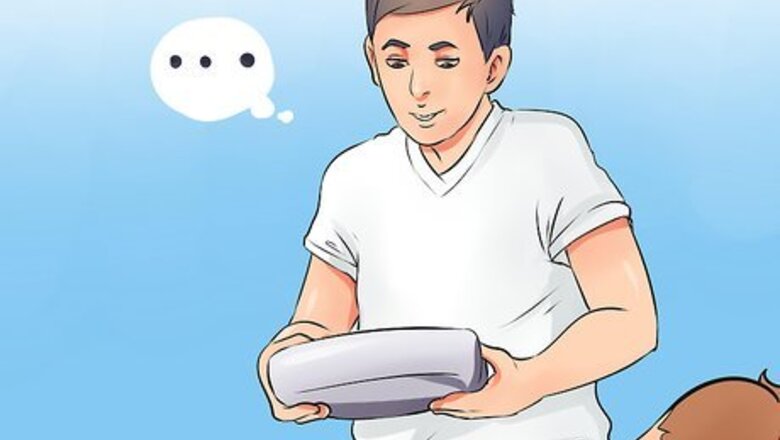
views
Preparing the Procedure
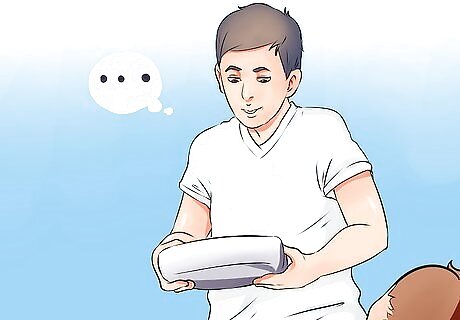
Explain the procedure. Greet the patient and explain that you are going to help them use the bedpan. Show patience and compassion, as this can be an uncomfortable and embarrassing situation for the patient. Assure the patient that you know what to do and will make the experience as pleasant as possible. Explaining everything to the patient beforehand can help calm your patient and reduce their fear and uncertainty.
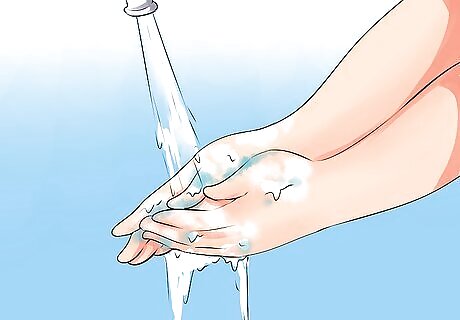
Wash your hands and put on gloves. Wash your hands thoroughly with hot water and soap. When finished, dry your hands and put on a pair of disposable gloves.

Provide privacy. Give the patient as much privacy as possible both now and throughout the entire procedure. Close the door and cover the windows with curtains. If the patient shares a room with someone else, draw the curtain separating the two beds. Keep the patient's legs covered with a blanket or sheet until you are ready to position the bedpan.
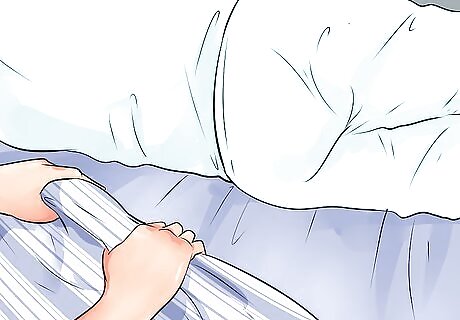
Protect the sheets. If possible, set a protective pad or towel beneath the patient to help prevent the sheets from being soiled.
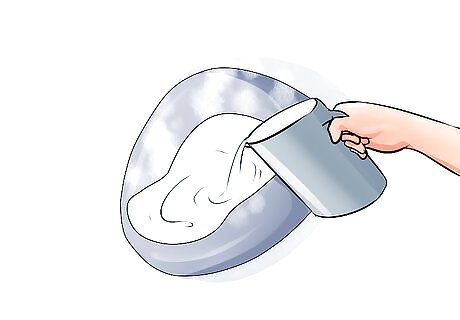
Warm the bedpan. Fill the bedpan with very warm water. Let the water sit for several minutes; then, dump it out and dry off the bedpan. The heat from the water should transfer to the bedpan itself, warming it up. A warm bedpan will be more comfortable for the patient to use than a cold one. If it is a metal bedpan, ensure that it’s not too hot.

Sprinkle the edge with talcum powder. Sift a thin layer of talcum powder over the edge of the bedpan. The powder will make it easier to slide the bedpan beneath the patient. Only do this if the patient does not have any bedsores or cuts on their buttocks. Do not use talcum powder if the patient has any open wounds.

Fill the bedpan with just enough water to cover the bottom. Alternatively, place a few squares of toilet paper in the bottom of the bedpan or coat it with a little vegetable oil spray (if you are in a home setting). Any of these practices make the cleanup process simpler.
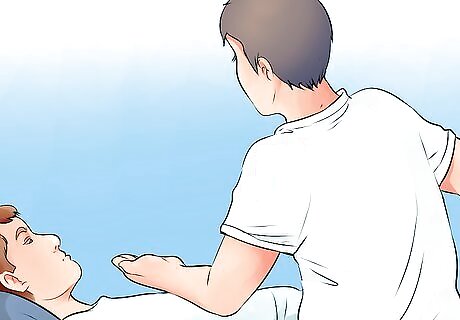
Ask the patient to remove their bottoms. Now that the supplies are ready, instruct the patient to remove clothing from the bottom half of their body. Assist the patient if they are unable to do this alone. If the patient is wearing a gown with an opening in the back, leave the gown on. If the gown has no opening, lift it above the patient's waist. Pull the top sheet or blanket back at this time.
Placing the Bedpan
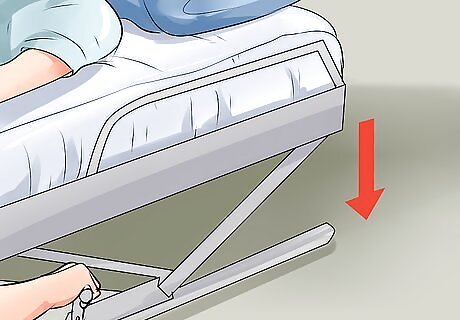
Lower the bed. Lower the bed as far as possible to reduce the risk of injury if the patient falls during the procedure. Lower the head of the bed at this time, since doing so may make it easier for the patient to lift or turn as needed.
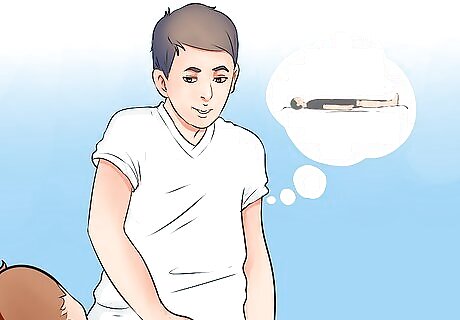
Instruct the patient to lie on their back. Their knees should be bent and their feet should be flat on the mattress.
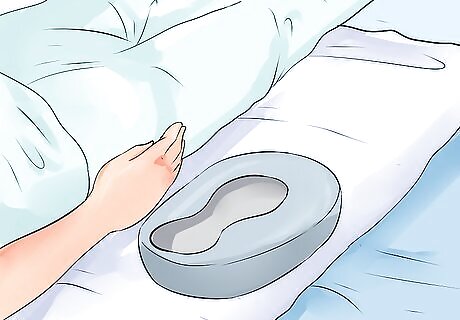
Place the bedpan next to the patient. Set the clean bedpan directly next to the patient's hips on the side of the bed. Positioning the bedpan as close as possible before moving the patient causes less strain on them.
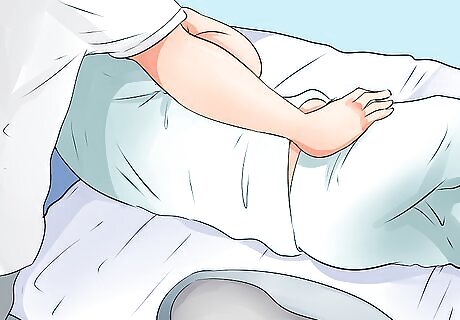
Help the patient shift away from the bed. The patient will need to raise their hips. If the patient does not have the strength to do so, turn them to their side instead. If the patient can lift their hips: Instruct your patient to raise their hips on the count of three. Support the patient by placing your hand beneath their lower back. Do not do any serious lifting with this hand. You should only provide light support. If the patient cannot lift their hips: Gently turn the patient to the side facing away from you. Work carefully to prevent the patient from rolling onto their stomach or off the bed.

Place the bedpan under the patient's buttocks. Slide the bedpan beneath the patient's buttocks with the curved edge of the bedpan facing the back. If the patient can lift their hips: Slide the bedpan underneath the buttocks and instruct the patient to ease down onto it, using your support hand to guide them. If the patient cannot lift their hips: Slide the bedpan directly next to the patient's buttocks. Keep the open end pointing toward the patient's feet. Gently roll the patient back onto their back and over the bedpan. Hold the bedpan close to the patient's body as you work.
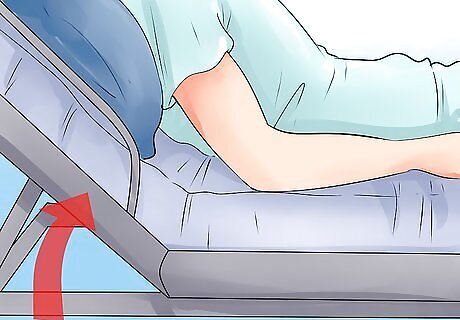
Raise the head of the bed. Carefully raise the head of the bed, bringing the patient's body up into a more natural toileting position.

Verify the positioning. Ask the patient to spread their legs slightly so that you can verify proper bedpan placement. Essentially, make sure that the bedpan is positioned securely beneath the entire area of the buttocks.
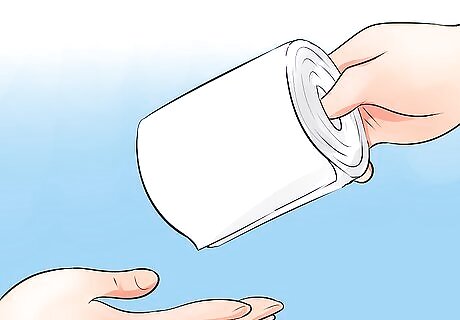
Provide toilet paper. Place toilet paper within the patient's reach. Let the patient know that it's there. It helps to provide sanitary wipes for the patient's hands. Keep a signal cord, bell, or similar device near the patient, too. Instruct the patient to ring the signal when finished.
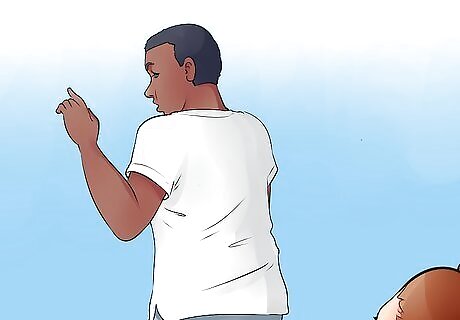
Step away. Give the patient privacy as they use the bedpan. Let them know that you will be back to check in a few minutes, but instruct the patient to ring for you if they finish before then. Do not leave the patient if doing so would be unsafe.
Removing the Bedpan

Wash your hands and put on new gloves. As soon as you leave the patient, remove your gloves and wash your hands. Several minutes may pass before you return to the patient again. Before doing so, wash your hands once more and put on a new, clean pair of disposable gloves.
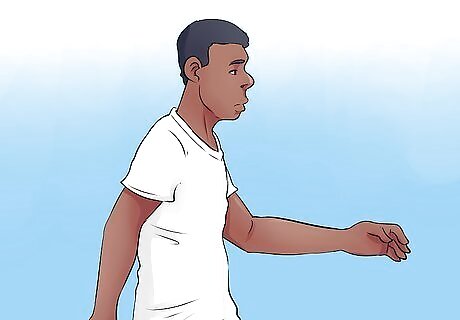
Return swiftly. Return to the patient's side as soon as you receive a signal from them. Bring a basin of warm water, soap, toilet paper, and sanitary cleansing cloths with you when you return. If the patient does not signal to you within 5 to 10 minutes, check on their progress. Continue checking every few minutes.
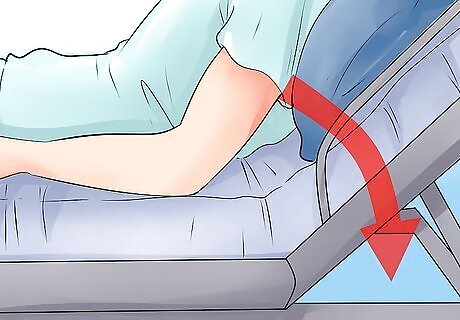
Lower the head of the bed. Lower the head of the bed as much as possible without making the patient uncomfortable. This position makes it easier for the patient to move off the bedpan.
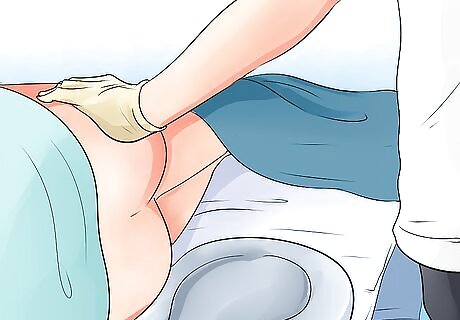
Assist the patient in moving away. If the patient got onto the bedpan on their own, the patient should also get off the bedpan on their own. If you need to turn the patient onto the bedpan, you will also need to turn the patient off of it. If the patient can lift independently: Ask the patient to bend their knees. Instruct the patient to raise their lower half. Place your hand beneath the lower back to offer gentle support. If the patient cannot lift independently: Hold the bedpan flat on the bed so that it does not spill. Simultaneously roll the patient to the side facing away from you.
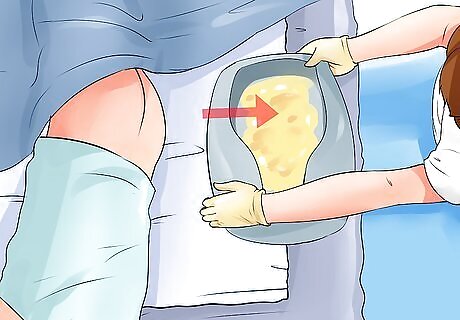
Slide the bedpan away. Slide the bedpan from its current position and allow the patient to rest. Work carefully and avoid sliding the bedpan against the patient's skin while removing it. Cover the bedpan with a towel and set it aside for the time being.
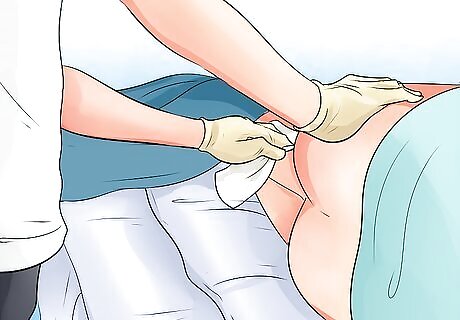
Clean the patient. Determine whether or not the patient needs assistance with getting clean. If not, you will need to clean them. Clean the patient's hands with a wet, soapy washcloth or sanitary wipes. Clean the patient's bottom half with toilet paper. For female patients in particular, wipe from front to back to reduce the risk of contaminating the urinary tract with bacteria from the rectum.
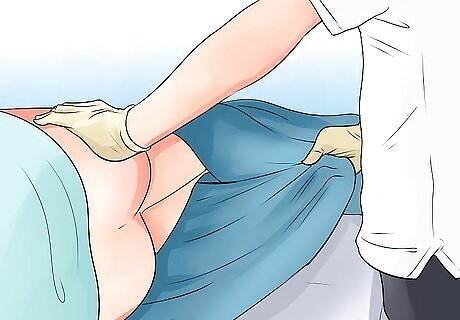
Clean the area. Once the patient is clean, remove the protective pad or towel. If a spill or other contamination occurs, change the bed linens and the patient's gown or clothing immediately. If there is an odor in the room, spray an air freshener.

Return the patient to a comfortable position. Help the patient shift back into a comfortable resting position. If necessary, raise or lower the entire bed or the head of the bed to keep the patient more comfortable.

Observe or record the contents. Take the bedpan to the bathroom and check its contents. Look for anything unusual, like streaks of red, black, or green, as well as mucus or diarrhea. If necessary, measure and record the output.
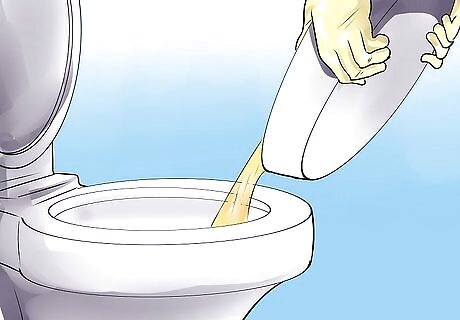
Dispose of the contents. Empty the contents of the bedpan into the toilet and flush them away.
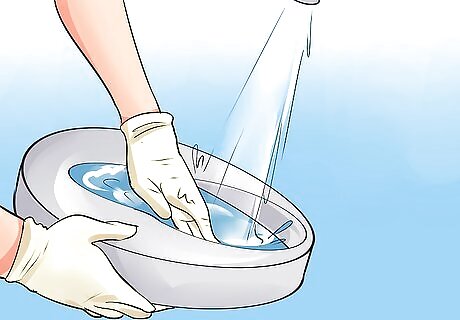
Clean or replace the bedpan. Unless the bedpan is disposable, clean it thoroughly before storing it. Flush out the contents of the bedpan with cold water. Pour this water into the toilet. Scrub the bedpan with cold, soapy water and a toilet brush. Rinse it with additional cold water, and dump the water into the toilet. Dry the bedpan and return it to its proper storage position when done.
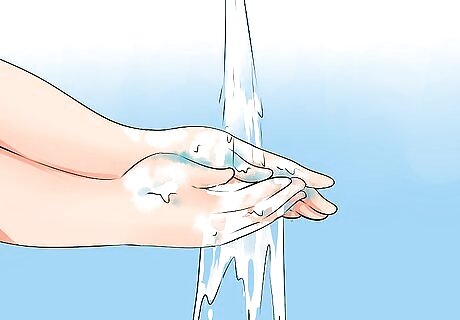
Wash your hands. Remove your gloves and wash your hands thoroughly with hot water and soap. You should wash your hands for a full minute, if not longer. Once everything is clean, return the room to its standard condition by opening curtains, windows, and doors that were closed for the procedure.
















Comments
0 comment